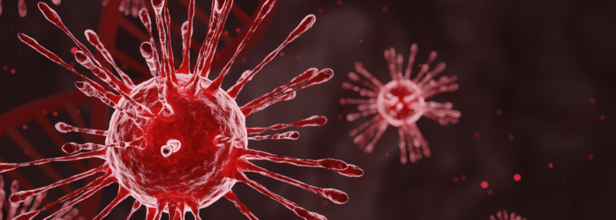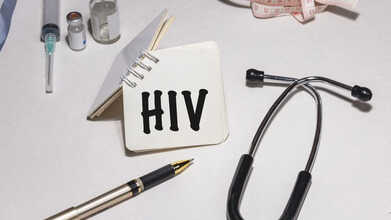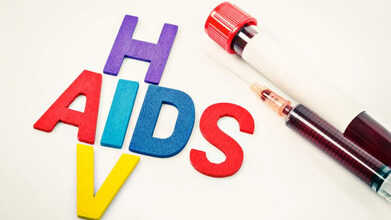- Health Conditions A-Z
- Health & Wellness
- Nutrition
- Fitness
- Health News
- Ayurveda
- Videos
- Medicine A-Z
- Parenting
After China, HMPV Cases Reported In Malaysia, Hong Kong And India, Know How To Stay Safe

Credits: Canva
Human metapneumovirus or the HMPV is a respiratory disease that causes flu or cold-like symptoms. But, why is this in the news suddenly? This is because the cases have surged rapidly in China, especially among children, as per the local authorities. The country's Centre for Disease Control (CDC) warned people to take precautions with health and hygiene.
After China, Malaysia too reported a 45% surge in 2024. Not too far away, Hong Kong too reported cases, though the numbers of cases are low, but the people are now more vigilant. The virus has also reached India, with a total of 7 cases as of now.
What is HMPV?
As per the 2022 study titled Zoonotic Origins of Human Metapneumovirus: A Journey from Birds to Humans, the metapneumovirus are member of the family Pneumoviridae and have been identified earlier in birds, also known as the avian metapneumoviruses (AMPV). This is why HMPV and AMPV are closely related.
HMPV was first discovered in 2001, however, studies show that it has been circulating for at least 50 years.
Is it emerging as a health concern?
Dr RR Dutta says that there has been no significant increase in respiratory illness cases beyond the expected seasonal variations. "HMPV s a respiratory virus that usually causes mild symptoms like cough, fever, and nasal congestion, similar to the common cold. In certain vulnerable groups, such as young children, the elderly, and those with weakened immune systems, it may lead to flu-like symptoms or complications like bronchitis or pneumonia. However, there is no cause for concern at this time as the situation remains under control," says the doctor.
Read more about HMPV cases here.
The best way to detect it is by observing the symptoms, which include:
- Fever
- Coughing
- Nasal congestion
- Runny Nose
- Sore Throat
- Nausea and vomiting
Dr Shelly Mahajan recommends getting the accurate diagnosis through RT-PCR tests for identifying the virus's genetic material, antibody tests to detect past exposure and comprehensive blood panels to assess any associated complication. " In some cases, imaging such as chest X-rays or CT scans may be recommended to evaluate respiratory involvement. Individuals must stay informed through credible sources and adhere to public health guidelines issued by authorities," the doctor points out.
What are the best ways to prevent it?
Dr Akanksha Dwivedi says, "HMPV is not a killer disease. It was present around us for a long time," so instead of fearing, it is important to stay vigilant and be aware of the preventive measure.
She mentions these following steps to ensure safety around you:
- Hand hygiene: Regularly wash your hands with soap and water for at least 20 seconds.
- Avoid touching your face: Refrain from touching your eyes, nose, and mouth with unwashed hands to prevent the transfer of viruses.
- Maintain distance: Keep a safe distance from individuals exhibiting symptoms of respiratory illness.
- Disinfect surfaces: Regularly clean and disinfect frequently touched objects and surfaces.
- Respiratory etiquette: Cover your mouth and nose with a tissue or your elbow when coughing or sneezing.
Will HMPV become a pandemic?
Experts currently assess the risk as low. HMPV is not a new virus, points out Dr Dwivedi, it was first identified in 2001 and has been circulating globally since then. "While recent surges in cases have been reported in countries like China and India, the virus typically causes mild illness in the general population. Health authorities are monitoring the situation closely, but there is no indication at this time that HMPV poses a pandemic threat comparable to COVID-19."
She also points out the effectiveness of homeopathy in dealing with the symptoms as it prevents organs from progressive damage. It further reduces dependency on steroids and bronchodilators, while providing natural and holistic remedies with minimal side effects.
Dr. Shelly (Mittal) Mahajan is the Lab Director & Clinical Lead at Mahajan Imaging Labs; Dr. RR Dutta is the HOD, Internal Medicine at Paras Health, Gurugram; Dr. Akansha Dwivedi is a Senior Consultant at Homoeo Amigo.
World AIDS Day 2025: Why Early HIV Diagnosis Is Crucial For Young Indians

Credits: Canva
Every year on December 1, World AIDS Day reminds us that HIV continues to be a global concern, and in 2025 the focus is on "Overcoming disruption, transforming the AIDS response. Early testing and treatment are key to making that transformation real. The sooner HIV is detected and treated, the better the long-term health outcomes. India has made notable progress.
According to 2023 estimates, adult HIV prevalence is around 0.2%, and prevention and treatment programmes using medication continue to expand. Still, challenges remain: gaps in testing, delayed diagnoses, and interruptions in care persist—issues World AIDS Day 2025 urges us to address.
World AIDS Day 2025: Why HIV Diagnosis Is Important
HIV is still a very real health concern today. It can affect anyone, students, professionals, or those in stable relationships—especially if needles or syringes are shared or protection is not used.
Once HIV enters the body, it gradually weakens the immune system. If left undetected and untreated, it can progress to AIDS, leaving even minor infections dangerous. The good news is that this progression can be prevented. With early testing and proper treatment, people living with HIV can lead full, healthy, and normal lives.
Dr. R K Gattani, Senior Consultant Physician at Kailash Hospital & Heart Institute, Noida, says, "Early testing is an important form of self-care. Choosing to get tested shows you are taking responsibility for your health—it doesn’t mean something is wrong."
Meanwhile, Dr. Vaibhav Gupta, Senior Consultant in Internal Medicine, Critical Care, and Diabetology at Regency Health Kanpur, adds, "Detecting HIV early allows doctors to begin Antiretroviral Therapy (ART) straight away, keeping the immune system strong, preventing AIDS, and reducing transmission risk almost to zero. In a world where millions are diagnosed each year, early recognition is one of the strongest tools young Indians have to protect themselves and their partners."
What Is Modern Antiretroviral Therapy?
Today’s ART enables people diagnosed early to live long, healthy, and productive lives. It keeps the virus under control, safeguards the immune system, and dramatically lowers the chance of passing HIV to others. Early diagnosis also gives young people the knowledge to make safer lifestyle choices.
Dr. Aabid Amin Bhat, Medical Director at Ujala Cygnus Group of Hospitals, explains, "Encouraging open discussions, expanding access to youth-friendly testing, and fighting stigma are essential steps. When HIV is found early, it’s not the end; it’s the start of informed care, timely treatment, and a healthier future."
The challenge is that early HIV symptoms often look like common illnesses like fever, fatigue, sore throat, swollen lymph nodes, and rashes—which can be easily ignored. Without prompt testing, the virus may advance silently, making treatment more complex. Early testing also opens doors to preventive options like post-exposure prophylaxis (PEP), which can prevent infection if taken within 72 hours of potential exposure. Recognizing early signs and seeking confidential, judgment-free testing allows young Indians to stop HIV before it develops into AIDS, turning a potentially life-altering diagnosis into a manageable condition.
HIV prevention is simpler than many think. Basic precautions like using protection during intimate contact, avoiding sharing needles or items that could contact blood, and staying informed about your health—make a huge difference. Anyone who may have been exposed should immediately consult a healthcare professional for guidance. Above all, don’t hesitate to get tested, ask questions, or seek help. Taking care of your health is the most responsible and empowering way to protect your future. People living with HIV, when on proper treatment and taking necessary precautions, should not automatically be seen as a risk to others.
Education and awareness remain key. Safe practices, timely diagnosis, and access to treatment can transform HIV from a feared disease into a manageable condition, giving young Indians control over their health and future.
World AIDS Day 2025: Experts Explain Which HIV “Facts” Are Actually Myths

Credits: Canva
World AIDS Day is marked across the globe every year on 1 December to draw attention to HIV and AIDS. In India, the day is observed through awareness drives and community-level programmes held nationwide. The National AIDS Control Organization (NACO), which functions under the Ministry of Health and Family Welfare, leads these efforts and brings people together to support the ongoing battle against the illness.
This year, the government reported a strong decline in HIV cases, noting 49 per cent fewer new infections since 2010, an 81 per cent fall in deaths linked to AIDS, and a 75 per cent drop in mother-to-child transmission between 2010 and 2024.
The update, shared on Sunday for World AIDS Day 2025, also underlines how myths continue to harm people living with HIV. Misconceptions remain widespread, including the belief that the virus spreads through simple physical contact.
What is HIV/AIDS?
The Human Immunodeficiency Virus (HIV) harms the body by attacking helper T-cells, which are vital for immunity. Acquired Immunodeficiency Syndrome (AIDS) develops when these cells fall to very low levels, leaving the body exposed to infections and diseases, as described by the Mayo Clinic.
Common HIV Myths That You Should Know About
There are many myths surrounding HIV/AIDS that people continue to believe, though experts have clarified the truth behind them: Dr Kajal Singh, Associate Professor, Obstetrics and Gynaecology Department, NIIMS Medical College and Hospital, Greater Noida, helped us debunk the myths.- It is a myth that HIV spreads through coughing, touching or shaking hands. Routine contact or a cough does not transmit the virus. Transmission can occur only when the skin has open sores or breaks that allow the virus to enter.
- It is a myth that a person diagnosed with HIV will survive only a short time. With proper treatment that keeps the virus suppressed, people with HIV can live for many years.
- It is a myth that every child born to an HIV-positive mother will also have HIV. With antiretroviral therapy, a planned C-section and other precautions, the chance of passing the virus to the baby can be reduced to below 2 per cent.
- It is a myth that HIV, being a viral infection, cannot be linked to the use of antibacterial or antifungal medicines. Since HIV weakens immunity, those living with it may be prone to common bacterial and fungal infections and may need such medicines for long periods.
- It is a myth that there is no risk when two or more HIV-positive partners are intimate. Unprotected sex can still allow tougher or drug-resistant strains of the virus to evolve and spread.
- It is a myth that people who do not show symptoms cannot have HIV. It can take years for signs to appear, and the only way to confirm the infection is through testing.
- It is a myth that taking medicines before intercourse can fully prevent HIV. Pre-exposure prophylaxis lowers the risk but does not remove it entirely.
World AIDS Day, observed each year on December 1, is a time to pause, acknowledge and renew our commitment. It pays respect to those who lost their lives to AIDS-related illnesses, offers support to people living with HIV and reminds the world that prevention, treatment and rights-based care remain essential. The theme for 2025, “Overcoming disruption, transforming the AIDS response”, urges countries to build stronger systems, widen access to services and uphold the dignity of all communities affected by HIV.
Who Was Ludwig Minelli, Founder of the Swiss Right-to-Die Organization, Who Died by Assisted Suicide at 92?

Credits: AP
Ludwig Minelli, 92, died on Saturday just days before his 93rd birthday, which would have been on December 5. He was the founder of Swiss right-to-die organization Dignitas. He has died by assisted suicide.
The members of organization paid tribute to him and said that he had always led a "life for freedom of choice, self-determination, and human rights".
Right-To-Die By Minelli
Minelli founded Dignitas in 1998, which has helped many people to choose how they wish to die with dignity. He however began his career as a journalist and worked as a correspondent for the German news magazine Der Spiegel. He then studied law and that is when his interest in human rights took off.
Throughout his life, he campaigned for the right to die and gave Dignitas the slogan: "dignity in life, dignity in death".
"I am persuaded that we have to struggle in order to implement the last human right in our societies. And the last human right is the right to make a decision on one's own end, and the possibility to have this end without risk and without pain," he said in a 2010 BBC interview.
He founded Dignitas after he split from an older Swiss assisted dying organization, Exit, because he said the rules felt too restrictive.
The reason for Dignitas to become famous was because the way it operated. Dignitas offered assisted suicide to non-Swiss citizens who travel to Switzerland because assisted dying is not permitted in their own countries. In a 2008 interview to Der Tagesspiegel, he said that Dignitas assisted 840 people to die, and 60% of them were Germans.
His Life Amid Criticism And Legal Battles
While he devoted his life for a cause, he was not spared from criticism. He was often criticized for an alleged lack of transparency over the financial dealings of the organization. He was further criticized for offering assisted dying options to those who were not terminally ill, but wanted to end their lives. He also faced numerous legal battles, and many of which were also appealed to Swiss apex court.
The Wins He Made
As per Dignitas, his work had a lasting influence. In 2011, the European Court of Human Rights announced the right of a person capable of judgment to decide on the manner and the time of their own end of life.
While in his own country, assisted dying was permitted under Swiss law since 1942, under strict condition, of course, Euthanasia still remains illegal there.
The main difference is that in Switzerland, a physician cannot administer a lethal injection, which is what euthanasia is. However, a physician can provide the means for a person to end their own life, and the individual must perform the final act themselves.
The legality of assisted suicide is based on Article 115 of the Swiss Criminal Code from 1942, which prohibits assistance only if motivated by selfish reason. The conditions for assisted suicide includes that the assistance must not be for selfish motives and must be provided to someone of sound mind who has made a self-determined and enduring decision to die. The person must also be suffering from an unbearable and uncontrollable condition.
© 2024 Bennett, Coleman & Company Limited

